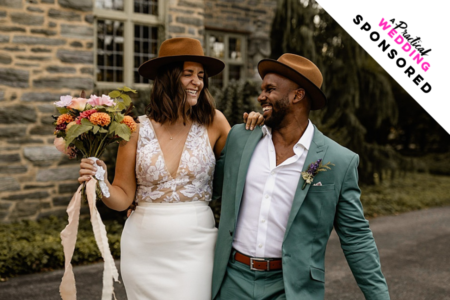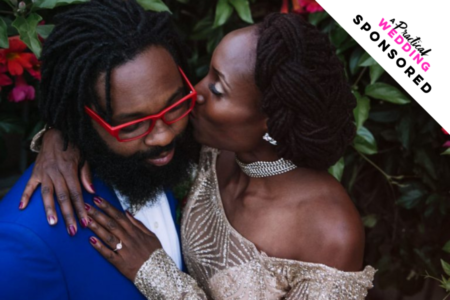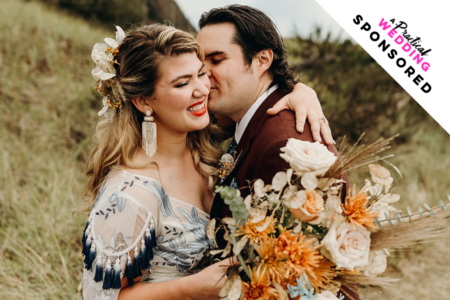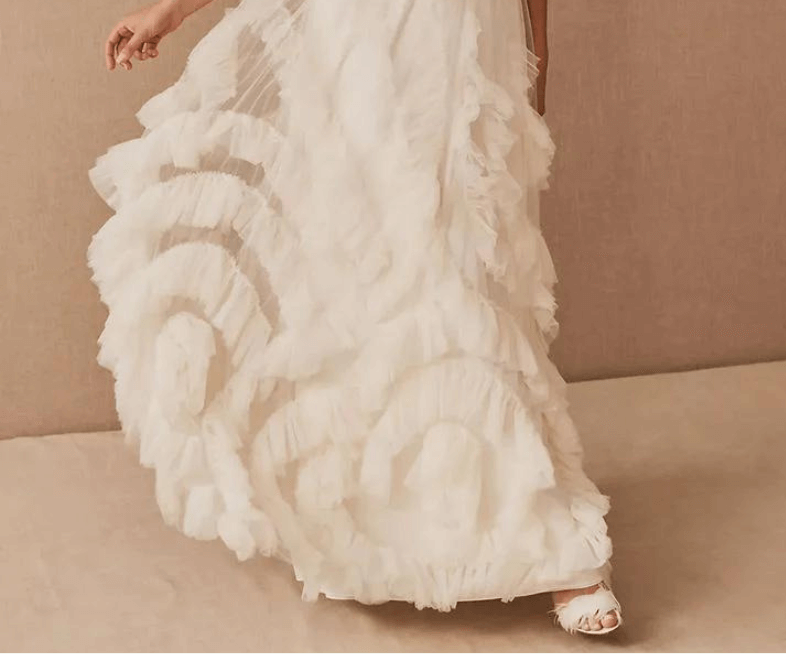*Ruchi & Dave*
Longtime readers (or even short-time readers) know Ruchi from the comment section. She’s always the one leaving the comment so articulate “Think of it as there being two parallel realities…” that everyone else just nods and points and comments, “What she said.” So it comes as no surprise that her post on inter-cultural, inter-faith weddings, about something so profoundly complicated it’s often hard to string words around it, is just as articulate. We’re running it in Working Together week because, well, first, one does not pull of an inter-cultural wedding without a huge amount of teamwork (like it or not). And second, her husband Dave will be joining us on Friday to give his perspective on the wedding and planning process (talk about teamwork). Till then, here is to adding another Hinjew wedding to the internet’s limited inspiration archives on the subject. Cheers to that!
When I was very little, my identity was simple. I used to say that I was half Indian and half American and that made me one whole person.
But then I got a little older and realized my youthful naïveté because of course I was actually half Gujarati and half Marathi and somehow wholly Indian and also wholly American. But that would make me three people, which didn’t really work mathematically. Perhaps I was fractured or divided, I thought. That way the math would work out! I saw my identity as a mosaic—little tiles coming from India and America to produce one whole, albeit slightly confused person.
But maybe you are wondering what any of this has to do with a wedding.
Well, what is a wedding if not a public, highly charged identity transformation? Which kinda explains why it’s so damn hard.
In the course of planning my wedding, I was told that my wedding was a “hippie wedding” by my sister, who was highly annoyed by the lack of bridal party, floral centerpieces, and limousines. I was told that my wedding was “extremely traditional” by my mother who didn’t understand how I, a former non-consumerist and general eco-nut, now wanted a wedding that included dinner, dancing, and toilet paper for 250 people.
Dave’s family, anxious about wearing Indian clothes, wondered if the wedding would feel “very Indian.” Meanwhile, my family worried that, without a Hindu pundit, the wedding would not be Indian enough.
Everyone was doing the math. Hippie + traditional + Indian + Jewish = FOUR weddings. And yet we were only having one
One wedding might not seem like a controversial choice, but in fact, no one in our families, including Dave and me at first, knew quite how to honor our disparate identities with only one wedding. The other Indians I knew who had married non-Indians had either had one completely secular ceremony, one completely Indian ceremony, or had two ceremonies—one Indian, one not. And while all of those options are perfectly valid and wonderful, none of them resonated exactly with us. A secular wedding was problematic because, while both Dave and I are spiritually agnostic, the rituals of religion and our cultural traditions are extremely important to both of us. A completely Indian ceremony would have honored my culture, but would have ignored the nearly four thousand-year-old practices of Dave’s family. And while two ceremonies would have allowed us to honor both cultures and give both equal weight, Dave and I were having trouble working out the arithmetic once again. Perhaps one Indian woman + one Jewish man = two weddings, but we only had one marriage and one life together. For us, the answer seemed to be to integrate our cultures into one ceremony.
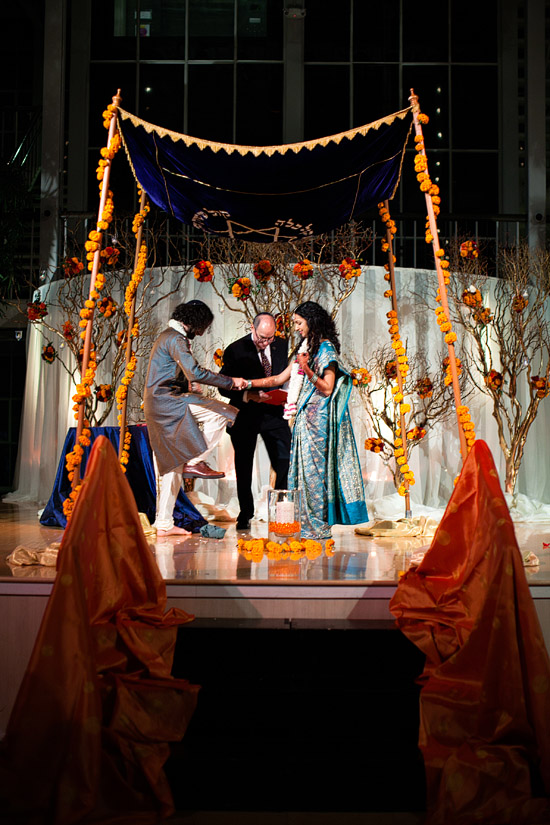
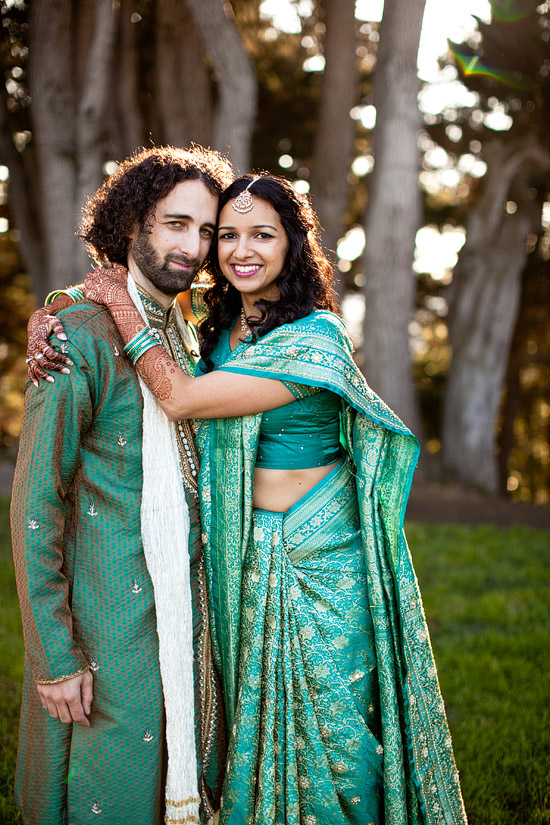


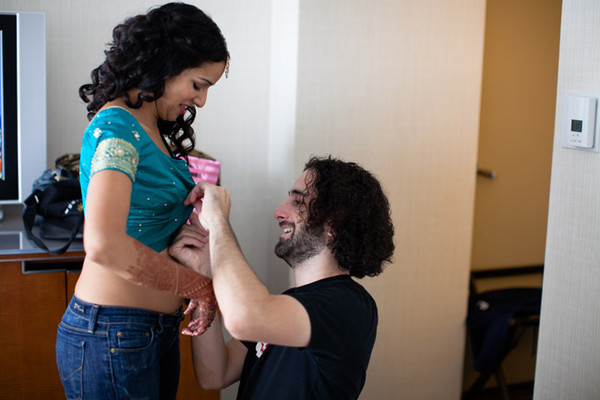


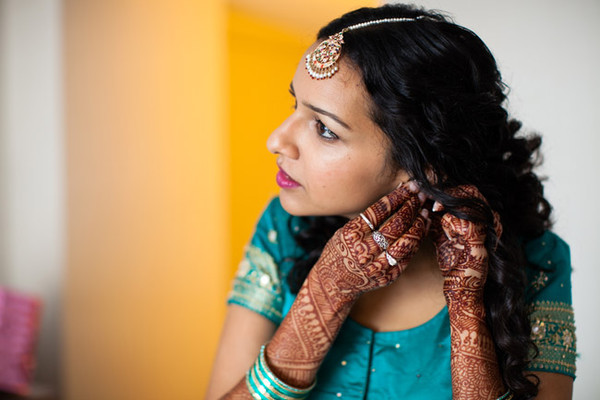
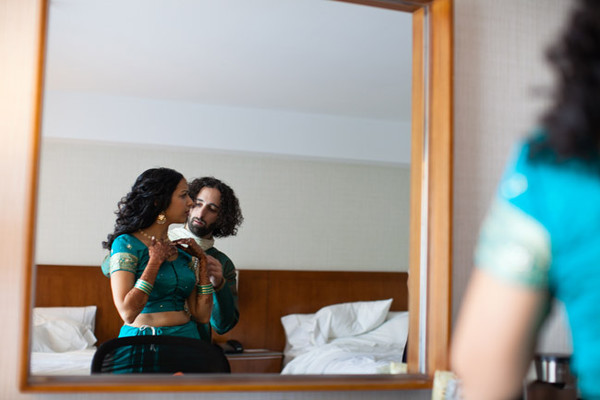


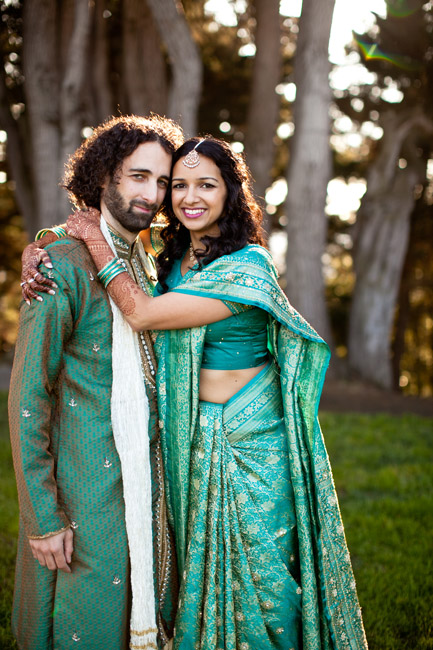
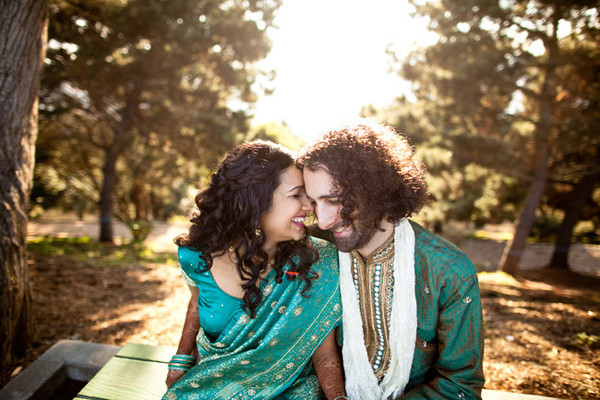
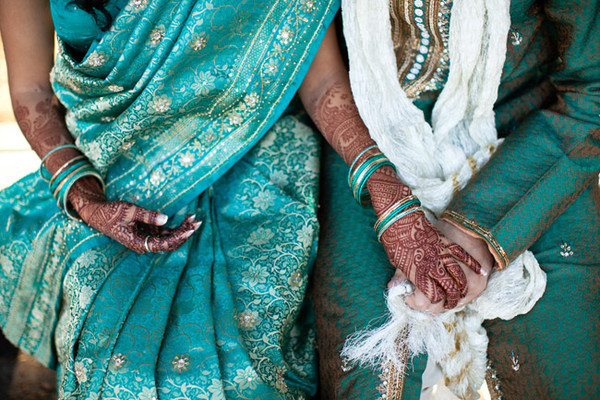
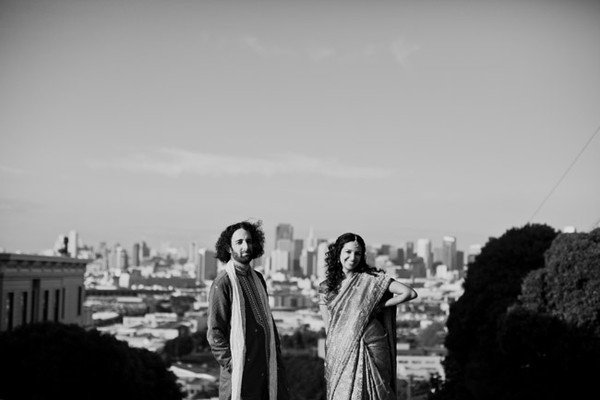
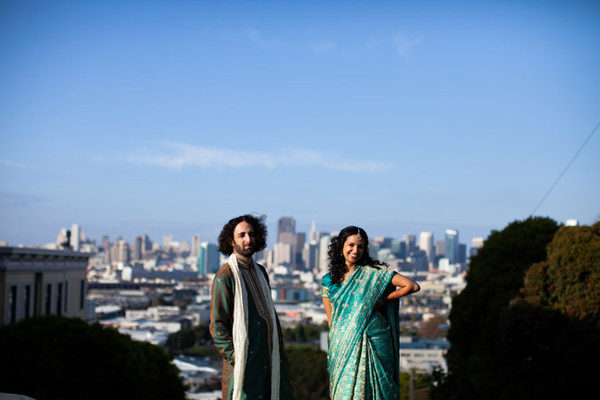
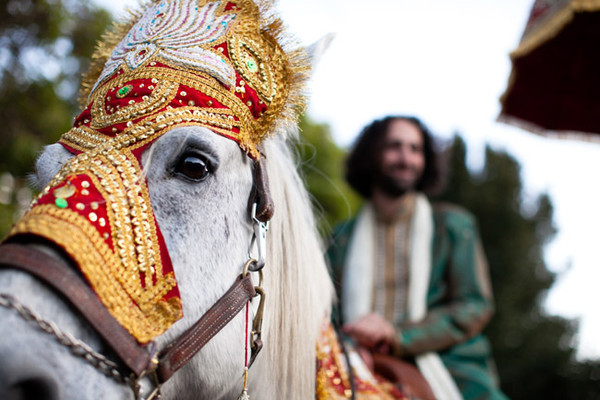
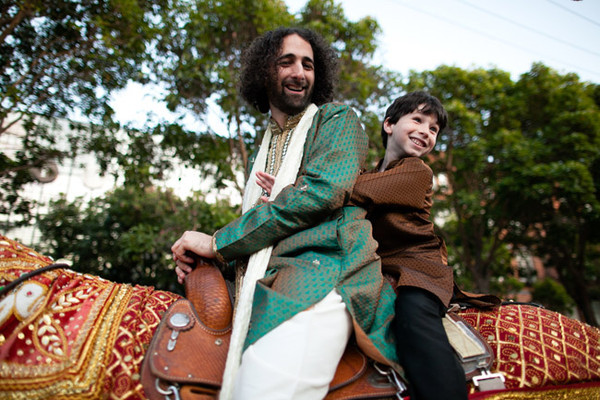
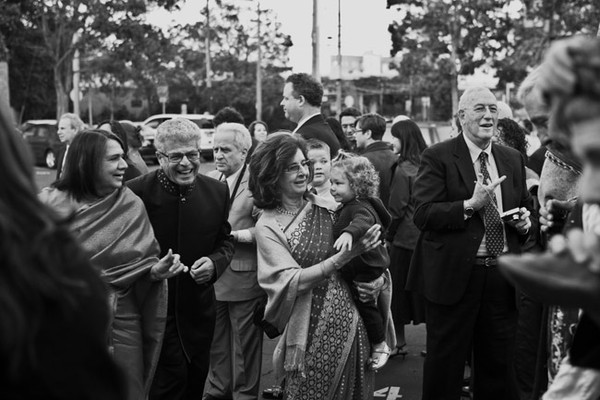
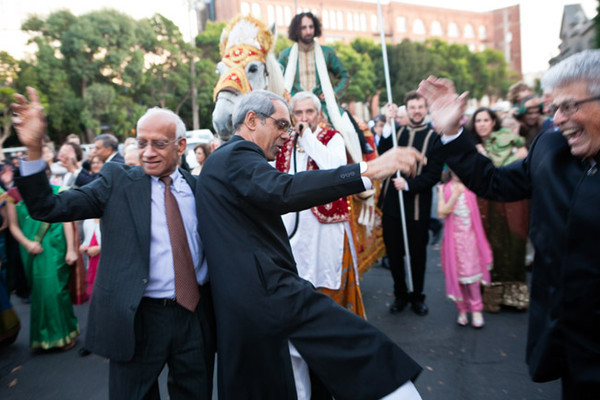
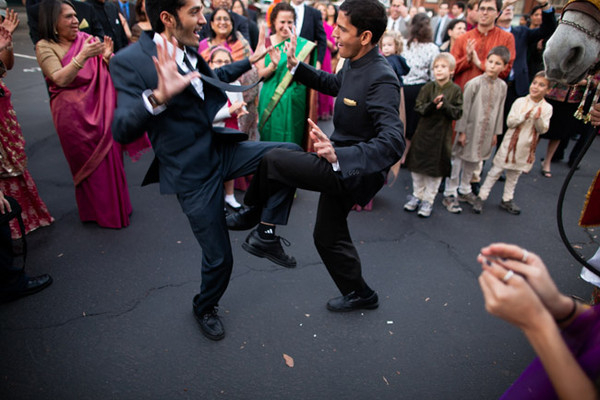
At first the task seemed daunting. There was no playbook for how to have a Hinjew wedding, and neither of us had ever been to one. I searched the internets high and low and found record of three or four other Hinjew weddings. Excited, I sent them all to Dave and devoured the few details available. One wedding featured a chuppah with sari fabric wrapped around the poles—I dutifully filed this away in my inspiration file, a folder destined to hold few images.
We started talking to Dave’s family’s rabbi who had questions and concerns. How could he perform our wedding without it being overly tilted to the Jewish side? How did my family feel? How could we incorporate Indian and Jewish traditions in a thoughtful and respectful manner?
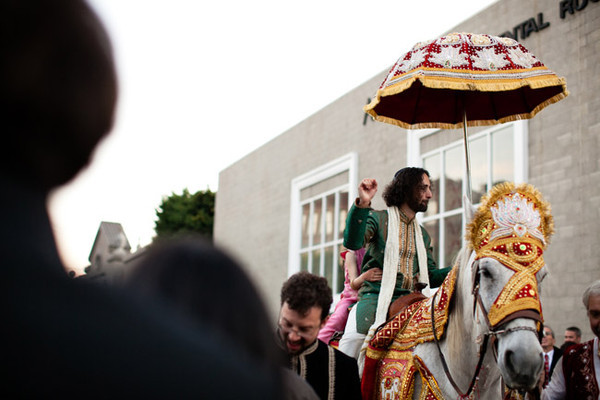

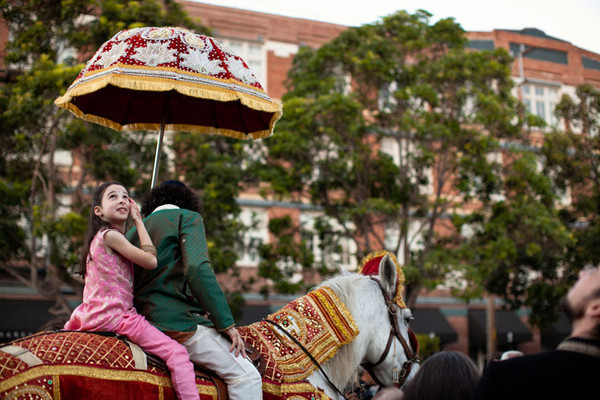
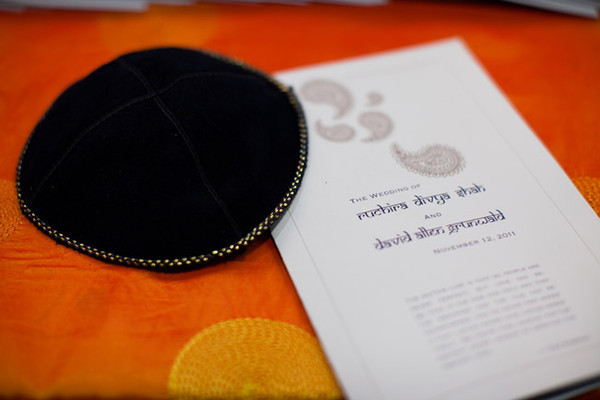
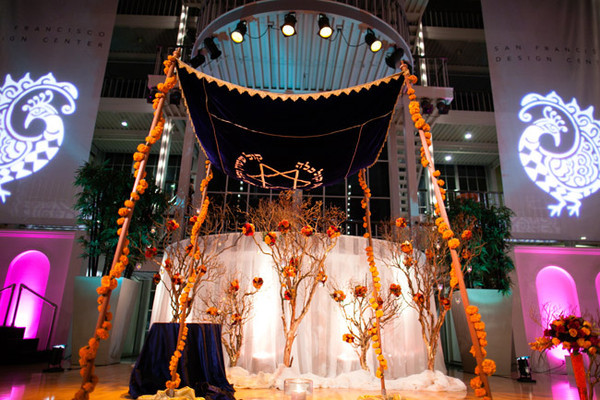
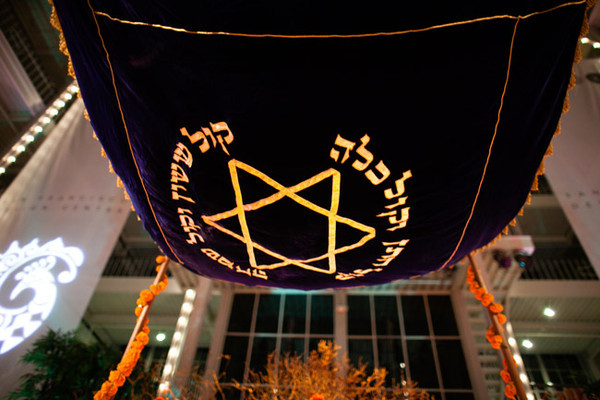
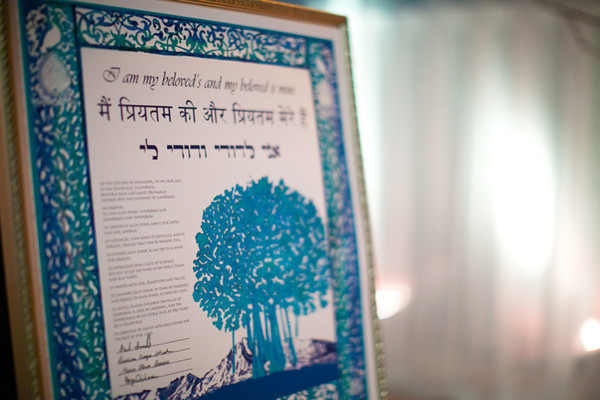
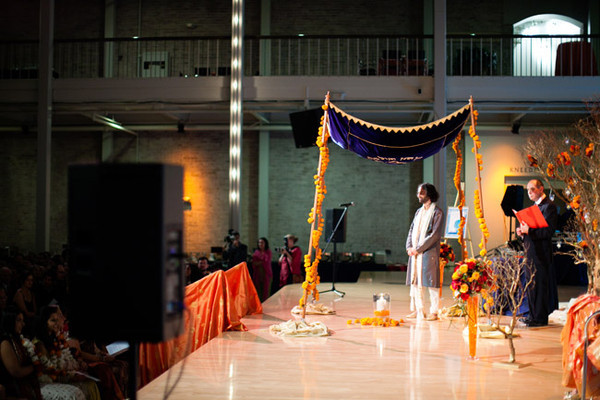
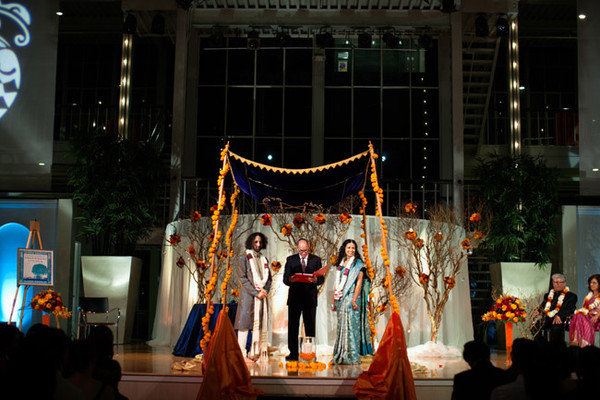


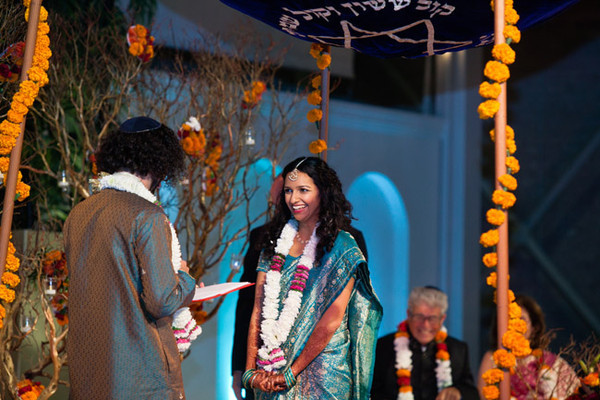


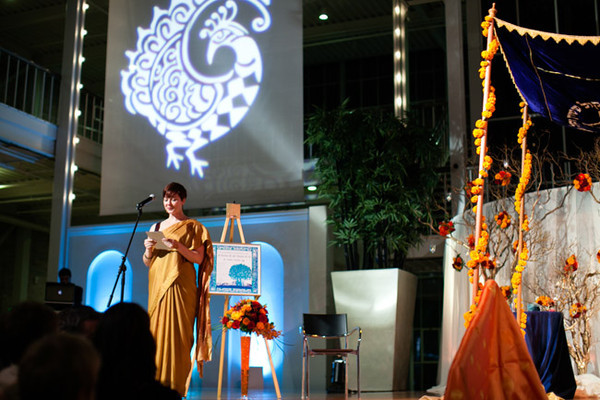
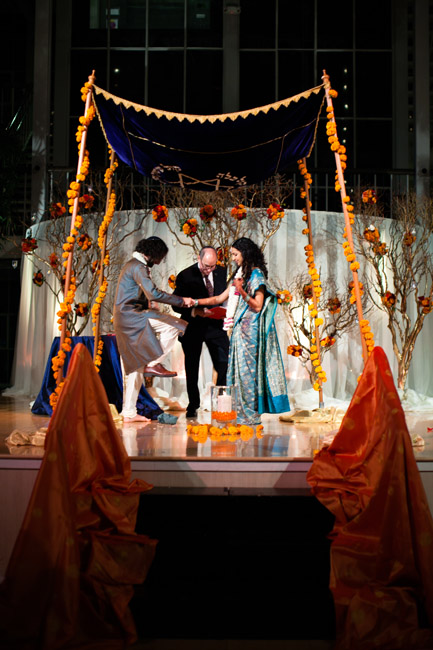

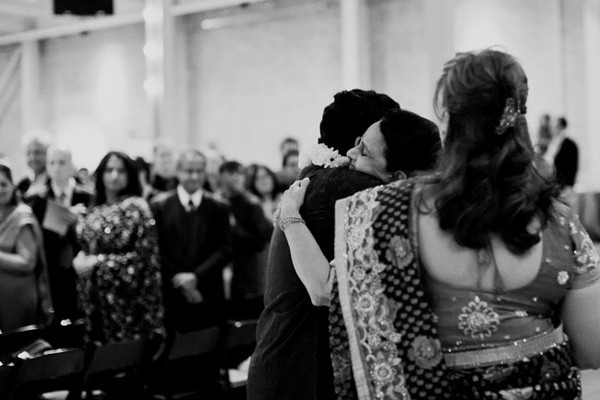


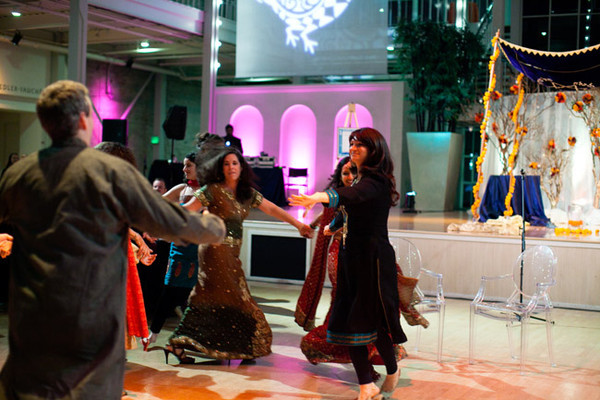
And Dave and I began to seriously discuss and articulate why our respective cultures were so important to us in ways we had never thought of before. For me, I realized that my Indian identity was very wrapped up in food, clothing, and names. For Dave, it was the rituals of Judaism that were the most important. From there, we were able to start integrating our cultures into our wedding and into our lives. Dave asked his family to wear Indian clothes for the ceremony and started cooking tandoori chicken for all our barbecues. I learned about Jewish holidays and life-cycle rituals. We went to three separate Passover seders and I hummed “Ma Nishtana” under my breath for a month.
The coolest part of this process of integrating our cultural identities came when I realized that there were some things about Judaism that I cared more about than Dave and vice versa. Dave had never had a mezuzah in his life, nor had he ever thought about it. But it was important to me, so we got one. Meanwhile, it was Dave who insisted we boil over the milk when we moved into a new place. It was Dave who peppered my mom with questions so that he could learn to make whatever Indian dish she had made that night. And I feel certain that it will not be me but Dave who carries on my family’s specialty dishes.
Still, as much as Dave and I were becoming adept at integrating our respective cultures into our shared life, the wedding planning wasn’t easy. A wedding is, after all, bigger than the two people getting married, and our families weren’t yet at the same place we were. We fought over the littlest and weirdest things—my family didn’t understand how Dave and I were going to stand during our ceremony, because of course the bride and groom sit. Meanwhile, Dave’s family was uncomfortable with sitting, because the parents always stand around the chuppah. It seemed silly, and yet it wasn’t. Everyone was being asked to do things foreign to them that they weren’t completely comfortable with. Dave and I learned that we had to be understanding, but that we also had to stay firm. After all, these issues weren’t going to go away. Our lives and cultures were going to be forever integrated; better to deal with this now than the day before our first kid’s bris. But I worried that our families and communities would feel uncomfortable during the ceremony. Would it be too weird? Too hard? Too different?
Meanwhile I was going through my own process of feeling alone and frustrated. We had been spending all this time working on the ceremony, and almost no time on the aesthetics, which scared me. I knew I wanted our wedding to be pretty and sh*t, but I had a hard time visualizing our wedding. Other people feel oversaturated by the wedding media—me, I was in a desert. All these ideas and pictures and inspiration boards and none of them for me. I threw several pity parties for myself and shook my fist at the powers that be. I live in the San Francisco Bay Area, one of the most diverse places in the country, if not the world. I had never really felt “othered” until my wedding when I realized that all wedding media works under the assumption that a bride in a white dress is traditional. For me, wearing white would have been untraditional. But that perspective isn’t represented by the wedding industry.*
Eventually, though, I came to see the dearth of inspiration as freeing. Where one might see a wedding blog and think, “Oh that’s beautiful, I wonder if I can fit that in at my wedding,” I was able to think, “Oh that’s beautiful.” Period. As hard as it was to be different, I was able to see pictures of weddings as lovely for other people. Meanwhile, without all the saturation, Dave and I were able to craft the wedding that was lovely for us.
And in the end, it was perfect. We had a horse and a hora. The seven marriage blessings traditional to Jewish weddings and the seven steps around the fire traditional to Hindu weddings. We took off our shoes for the ceremony and still figured out a way for Dave to stomp on the glass. Dave’s family wore Indian clothes (as did his friends, my friends, and even our amazing photographers!). And my family and friends proudly sat with yarmulkes perched atop their heads. As our rabbi said during our ceremony, that day, two ancient cultures came together. And it felt magical.
It looked magical too. Turns out, that when you have a bunch of women wearing beautiful saris, you don’t need to worry about the aesthetics. Also turns out, that Meg is, as always, right. I didn’t read her book until after my wedding, but in it she writes, “If you create a really meaningful wedding ceremony, you can put less effort into the rest of the party. If your guests are on an emotional high after basking in your love and wiping away their tears, they are much less likely to notice that the centerpieces never showed up.” I definitely found this to be true. When I made my rounds during the cocktail hour, I was emotionally exhilarated which I thought was pretty normal. But what surprised me was how emotionally charged our guests seemed to be.
As we begin the rest of our lives together, I realize that the math still doesn’t add up. And I realize that it doesn’t have to. Because, in the end, our identities are so much more complex than mere arithmetic. We are able to hold multiple disparate identities—Jewish, Indian, American, San Franciscan—without necessarily having to fracture and divide them. As beautiful an image as the mosaic is, I don’t think it works anymore. Instead, maybe our identities are more like kaleidoscopes, with our various cultural histories refracting into one beautiful interweaved pattern.
Looking back on the day, I remember with complete clarity the private breakfast Dave and I shared. I remember how gorgeous my mother-in-law looked and felt in her sari. I remember my cousin proudly announcing she had stolen Dave’s shoes. I remember my mother’s expression of excitement and terror when she was hoisted up in a chair during the hora. I remember my wedding and can’t help getting excited. After all, as wonderful as it was, it was just the beginning.
*Just to be clear—I don’t really blame the wedding industry for its lack of representation of people of color and people of different traditional backgrounds. Ultimately, wedding media and wedding blogs work with the weddings they are given. If people of color don’t submit their weddings, they won’t be shown.
The Info—Photography: Emily Takes Photos / Venue: San Francisco Galleria / Day Of Coordinator: Lowe House Events / Ruchi’s Wedding Sari: Roopkala in Mumbai, India / Ruchi’s Reception Lengha: Ushnakmal in Delhi, India / Ruchi’s Ring: Turtle Love Co. / Dave’s Wedding Kurta: Mumbai, India (we can’t remember the store!) / Dave’s Sherwani: Benzer in Mumbai, India / Ketubah: KetubahKraft / Mehndi: Kamala at Henna World

